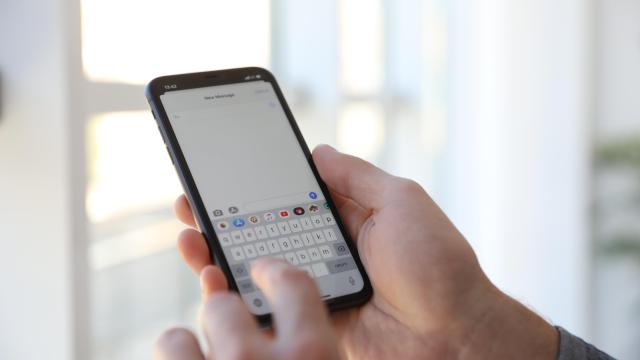Back in the day, phone keyboards were actual keyboards. When you typed, you had to press physical keys, which provided tactile feedback as you texted away. Touch screens changed all that; now, we tap on unyielding slabs of glass. If you keep your iPhone on silent, you won’t even have the sound of fake keyboard clicks to let you know you successfully hit a letter. It’s just how we live now.
But software developers have programmed a compromise into our smartphone keyboards. While we’re likely never going back to physical smartphone keyboards (RIP BlackBerry), most modern phones can offer some tactile response while typing via haptic feedback.
Haptic feedback is a vibration meant to simulate something you’re doing on your phone. Unlike a traditional vibration, which is often uniform and and loud, haptic feedback is subtle. You’ll notice it when scrolling through options on your iPhone, such as when setting a timer — as you scroll through the various times, you’ll feel a series of subtle “taps” corresponding with each, like what you might feel when spinning the dial on a safe. It’s a neat feature that makes your phone feel a bit more three dimensional.
On iPhone, haptic feedback is made possible thank to the Taptic Engine. Apple first touted the hardware on the iPhone 7, which made everything from 3D Touch (again, RIP) to scrolling feel more precise than standard vibration. Even so, for years the company failed to bring the tech to the keyboard — though other developers were there to fill the gap with third-party apps.
Apple added haptic feedback to the keyboard in iOS 16
With iOS 16, Apple has finally added haptic feedback as an option for the stock keyboard, now spotty third-party solution required. If you’re like me, having too many keyboards on your phone gets annoying fast, as you end up switching between them accidentally all the time. Third-party keyboards also present privacy concerns: You need to enable “Full Access” of the keyboard to the app, which unnecessarily hands over your typing data.
If I can manage it, I prefer to use the built-in keyboard. Adding haptic feedback to the stock iOS keyboard makes the decision to stick with it even easier.
How to use the haptic keyboard on your iPhone
For now, you’ll need to download and install the iOS 16 beta to your iPhone if you want to try out the haptic feedback for your keyboard. If you’d rather not run beta software on your primary device (which is usually the smart move), you can wait for Apple to release the new software this fall.
Once you have iOS 16 on your iPhone, enabling haptic feedback is simple (albeit hidden). First, open Settings, tap Sounds & Haptics, then choose Keyboard Feedback. Under “Sound,” tap “Haptic.” Now, whenever you type, you’ll feel a subtle vibration. If it doesn’t quite replicate the experience of a physical keyboard, it offers the same sense of positive reinforcement. If you find the haptics aren’t for you, return to this menu and turn off the setting.
